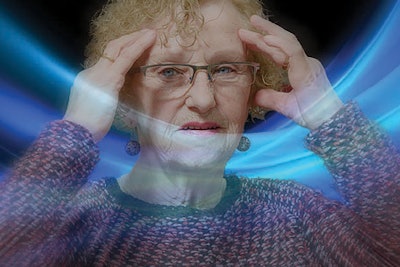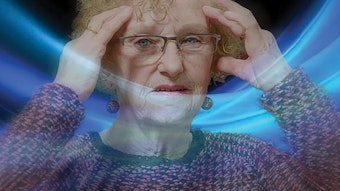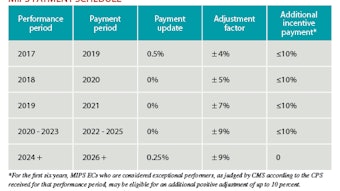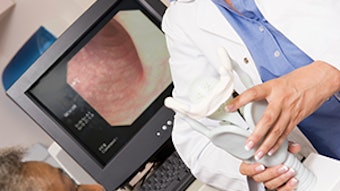Patient Information | Frequently Asked Questions: Benign Paroxysmal Positional Vertigo (BPPV)
There are crystals of calcium carbonate that are a normal part of our inner ear and help us with our balance and body motion. These tiny rocklike crystals or “otoconia” (oh-toe-cone-ee-uh) are settled in the center “pouch” of the inner ear. BPPV is caused by the crystals becoming “unglued” from their normal place.

Q: What is BPPV?
A: Benign Paroxysmal Positional Vertigo (BPPV) is the most common inner ear problem and cause of vertigo, or false sense of spinning.
BPPV is a specific diagnosis and each word describes the condition:
Benign: it is not life-threatening, even though the symptoms can be very intense and upsetting
Paroxysmal (par-ek-siz-muhl): it comes in sudden, short spells
Positional: certain head positions or movements can trigger a spell
Vertigo: feeling like you are spinning or the world around you is spinning1
Q: What causes BPPV?
A: There are crystals of calcium carbonate that are a normal part of our inner ear and help us with our balance and body motion. These tiny rocklike crystals or “otoconia” (oh-toe-cone-ee-uh) are settled in the center “pouch” of the inner ear. BPPV is caused by the crystals becoming “unglued” from their normal place. They begin to float around and/or get stuck on sensors in the wrong part or wrong canal of the inner ear. The most intense part of your BPPV symptoms have to do with how long it takes the crystals or sensor to settle after you move or change your head or body position. As the crystals move and settle, your brain is getting powerful (false) messages telling you that you are violently spinning when all you may have done is laid down or rolled over in bed.Q: What are the common symptoms and how can BPPV affect me?
A: Everyone will experience BPPV differently, but there are common symptoms. The most common symptoms are distinct triggered spells of vertigo or spinning sensations. You may experience nausea (sometimes vomiting) and/or a severe sense of disorientation in space. You may also feel unstable or like you are losing your balance. These symptoms will be intense for seconds to minutes. You can have lasting feelings of dizziness and instability, but at a lesser level, once the episode has passed. In some people, especially seniors, BPPV can appear as an isolated sense of instability brought on by position change like sitting up, looking up, bending over and reaching. BPPV does not cause constant severe dizziness and is usually triggered by movement. BPPV does not affect your hearing or cause you to faint. The natural course of BPPV is to become less severe over time. People will often report that their very first BPPV spinning episode was the worst and the following episodes were not as bad.Q: How common is BPPV?
A: BPPV is very common. It is more common in older people. Many of us will experience it at some time in our lives.Q: What caused my BPPV?
A: Most cases of BPPV happen for no reason. It can sometimes be associated with trauma, migraine, other inner ear problems, diabetes, osteoporosis, and lying in bed for long periods of time (preferred sleep side, surgical procedures, illness).Q: How is BPPV diagnosed?
A: Normal medical imaging, such as scans and X-rays, or medical laboratory testing cannot confirm BPPV. Your health care provider or examiner will complete simple bedside testing to help to confirm your diagnosis. The bedside testing requires the examiner to move your head into a position that makes the crystals move and will make you dizzy. The testing may include hanging your head a little off the edge of the bed or rolling your head left and right while lying in bed. The examiner will be watching you for a certain eye movement to confirm your diagnosis. The most common tests are called the Dix-Hallpike test or supine roll test.Q: Can BPPV be treated?
A: Yes. Although medications are not used other than for relief of immediate distress, such as nausea, most BPPV cases can be corrected with bedside repositioning exercises that usually take only a few minutes to complete. They have high success rates (around 80%) although sometimes the treatment needs to be repeated a few times. These maneuvers are designed to guide the crystals back to their original location in your inner ear. They can be done at the same time the bedside testing for diagnosis is being performed.You might be sent to a health professional (medical provider, audiologist or therapist) who can perform these maneuvers, especially if you have any of the following:
- severe disabling symptoms
- you are a senior with history of past falls or fear of falling
- you have difficulty moving around (such as joint stiffness especially in your neck and back and/or weakness).
You can also be taught to perform these maneuvers by yourself with supervision which is called “self-repositioning.”
Q: Is there any down side to BPPV repositioning treatments?
A: During the actual BPPV treatment there can be some brief distress from vertigo, nausea, and feelings of disorientation. Following the treatment, some people report their symptoms start to clear right away. Many times, others report that they have continuing motion sickness-type symptoms and mild instability. These symptoms can take a few hours or a few days to go away.Q: Can BPPV go away on its own?
A: There is evidence that if BPPV is left untreated, it can go away within weeks. However, remember that while the crystal is out of place, in addition to feeling sick and sensitive to motion, your unsteadiness can increase your risk for falling. You will need to take precautions not to fall. You are at a higher risk for injury if you are a senior or have another balance issue. Seniors are encouraged to seek professional help quickly to resolve symptoms.Q: How do I know my BPPV has gone away?
A: The strong spinning sensations that have been triggered by position changes should be greatly reduced if not completely gone.Q: How long will it take before I feel better?
A: You can still feel a little bit sensitive to movement even after successful treatments for BPPV. You can also feel unsteady at times. These mild symptoms can take a few days to a few weeks to slowly go away. You should follow up with your medical provider or physical therapist if your symptoms of dizziness or instability do not get better in a few days to a couple of weeks. Seniors with a history of falls or fear of falling may need further exercises or balance therapy to clear BPPV completely.Q: Is there anything I should or shouldn’t do to help my BPPV?
A: Yes. Your balance will be “off” so you will need to take precautions that you don’t fall. You will feel more sensitive to movement until the BPPV has been successfully treated and healed. After your symptoms are slowly going away, it is important to return to normal activities that you can do safely. Exposure to motion and movement will help to speed your healing.Q: Can BPPV come back and/or can I prevent it?
A: Unfortunately, BPPV is a condition that can sometimes return. Your risk for BPPV returning can shift from low risk (few experiences in your lifetime) to a higher risk which is often caused by some other factor such as trauma (physical injury), other inner ear or medical conditions, or aging. Medical research has not found any way to stop BPPV from coming back, but it can be treated with a high rate of success.Q: What happens if I still have symptoms following my initial treatments?
A: There are a number of reasons your initial treatment could have failed.- It is not uncommon to need more than one repositioning session to get the crystals back in their proper place. You may only need a few more treatments.
- There are a number of different forms or types of BPPV, which can require special treatment. The self-treatment is designed for the most common form of BPPV. There are a number of other treatments available, which depend on the different types of BPPV.
- BPPV can sometimes be in more than one canal and/or side at the same time. This would require multiple treatments to resolve.
- If your initial tries at repositioning have failed, mainly if you have only tried self-repositioning, seek a health professional who specializes in BPPV. It can be difficult to complete correct positioning by yourself. A professional may be able to complete better positioning and/or use helpful equipment.
- There can be some significant leftover dizziness even after the BPPV crystals have been correctly repositioned. This dizziness may require more time (few days to couple of weeks) or it may be appropriate for a different exercise/movement routine. It is VERY important to follow-up with your healthcare provider if you continue to have symptoms. You may be sent for further testing to confirm your diagnosis and/or discuss further treatment options.
Resources:
AAO-HNS/F:
For more information on BPPV, visit: www.entnet.org/BPPVCPG
Vestibular Disorders Association (VEDA):
INFO@vestibular.org
5018 NE 15th Ave., Portland OR 97211
(800) 837-8428
1 Adapted from Woodhouse, S. “Benign Paroxysmal Positional Vertigo (BPPV)”. (n.d., para. 1). Retrieved from https://vestibular.org/understanding-vestibular-disorders/types-vestibular-disorders/benign-paroxysmal-positional-vertigo
SOURCE: Bhattacharyya, NM, Gubbels, SP, Schwartz, SR, et al; Clinical Practice Guideline (Update): Benign Paroxysmal Positional Vertigo. Otolaryngol Head Neck Surg. In press.












